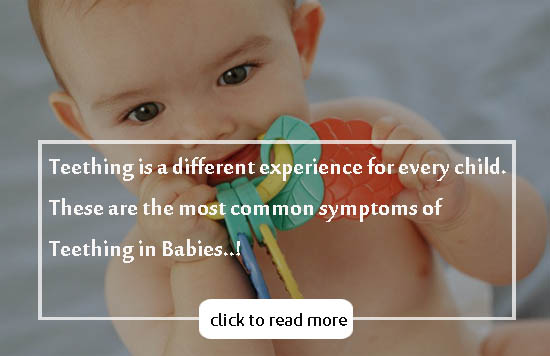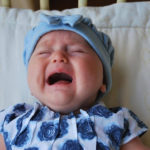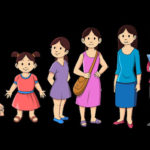As every child is unique, teething is a different experience for every child. My son is 2.8 now but when he was only 3 months old and started drooling, my family’s elderly ladies cautioned me this was a teething symptom. However, his first tooth came when he was 6 months old. All this time, from his third month to finally the sixth month, I spent waiting to see him teething. Other than drooling and very less biting, there were no such symptoms of teething in my son’s case. In this article, I will be sharing Common Symptoms of Teething in Babies and when do babies have teeth.
Not all kids face the same teething time; some of them even have virtually no symptoms. And a few of them experience teething pain for months. Thankfully there are some common signs to look for and be ready for:
Common Symptoms of Teething in Babies:
Seeing your baby grow every day and achieve new milestones is a very joyful experience for every parent. But sometimes, a milestone can bring discomfort in babies, one such is teething. Teething in babies is acknowledged by various issues such as irritation, drooling, etc. Here are some of the common symptoms that can help you gauge if your baby is on their teething journey.
1. Age
There is no fixed time on when do babies have teeth. But commonly at 6 months of age, most of the kids get their first white Perl. You might have heard a few strange cases as well. Like a baby was born with a tooth in her mouth, a tooth comes very early during the second to the third month, and a child got her first tooth after she completes one. No fixed pattern at all. If you ask me can babies teeth at 3 months, I would say, “Yes”. As teething time is different in babies.
2. Order
The most common are two teeth in the bottom centre and then the top two centres. Then the pattern typically goes outward with the lateral incisors, followed by the first molars, or the molars closest to the opening of the baby’s mouth. But my son got his top tooth first. So again there is no fixed ordering.
Baby Teeth Order:
The appearance order of baby teeth is as follows:
- Bottom incisors (bottom front teeth): Around 5 to 7 months of age, and often erupt first.
- Top incisors (the top front teeth): usually erupt between 6 and 8 months.
- The top lateral incisors (which are situated on either side of the top front teeth): start to erupt between 9 and 11 months of age.
- The bottom lateral incisors (which are situated on either side of the bottom front teeth): erupt between 10 and 12 months after tooth emergence.
- First molars, or the back teeth: appear between 12 and 16 months of age.
- canines (located between the lateral incisors and the first molars): erupt Between 16 and 20 months
- Second molars: These usually appear between the ages of 20 and 30 months.
Why Cold Symptoms Can Be Mistaken for Teething Symptoms?
As previously mentioned, teething normally starts around 6 months of age, which also happens to be the time when the placenta-transmitted immunities that babies receive from their mothers begin to decline. The development of the infant’s own immune system takes place during this transitional stage. Infants are hence more vulnerable to mild illnesses. The signs of teething can occasionally be mistaken for a small illness or the common flu due to these simultaneous changes, and vice versa. This explains the reason why only a few parents acknowledged their infants’ teething problems. It is very possible that the parents of the other thought the symptoms were from a cold or some sort of minor sickness.
Honestly, I feel blessed that my son didn’t face much while teething. He was neither extra cranky nor fussy. But typically kids feel achy and soreness with itchiness in their gums.
- Drooling is the most identified symptom of teething in babies. Drooling actually stimulates teething, so babies drool a lot. A lot means really A LOT. If you see your kid drooling, fasten a bib to keep her more comfortable and clean. Drooling can cause rashes in the chin area so gently wipe this area and apply the baby cream.
- Biting is next on the list of teething symptoms. Pressure from the teeth poking through gums causes so much discomfort for babies. And this is relieved by counterpressure or biting. Babies during this time can bite anything. Be it any toy or your nipples, so beware. Give them something to chew this time. Good quality teethers and rings help. Chewing is even more effective when the object is cold. Also, dont miss to know the best immune-boosting food for kids.
- Baby’s mouth aches as that little tooth presses on the gums and pokes up to the surface. This can cause irritation for her which can last from a few hours to the whole day. And believe me, extra snuggles, kisses, and lots of patience are what a teething baby needs.
- A bad stomach is another common sign of teething in babies. They put anything and everything in their mouth and some of them can cause stomach infections.
- Teething babies can be fussy about feedings and get more frustrated as neither their discomfort nor their hungry tummies find relief. So they cry unusually. Sometimes because of the pain that tooth is causing and at times because of their hunger. Ask your doctor if you find the baby crying so much.
- Babies whose teeth are coming in may tug furiously at their ear or rub their cheek or chin. This is because gums, ears, and cheeks share the same nerves. So pain in gums can travel through the same nerve pathway causing them to rub their cheeks or chin.
Although it might be difficult, but teething is a normal and important stage in a baby’s growth. It will be easier for you and your baby to get through this stage if you are aware of the typical teething symptoms and know how to ease your baby’s discomfort. It’s vital to remember that every baby is different, so you should provide your child with the support and care that best meets his or her needs.
Also, home remedies loose motion during teething is completely normal. The intensity of these symptoms (or any others) varies from baby to baby. Fortunately, my son passed through this with ease but you can probably expect to see at least some, and maybe many, of these symptoms while your baby starts teething. Be watchful, Moms! So these are the common symptoms of Teething in Babies.
FAQs
1. What stage of teething is painful?
The stage that is typically the most painful during teething is when the first teeth are erupting through the gums. This usually occurs around 6 months of age but can occur anywhere between 3 to 12 months of age. During this stage, the gums become swollen and tender, and the baby may experience discomfort and pain. However, it is important to note that signs of teething in babies can be different for every child and some may experience less pain or discomfort than others. You can understand the severity of pain by checking the teething symptoms of baby.
2. How many days does teething last?
Teething typically lasts for several months, usually beginning around 6 months of age and continuing until all the primary teeth have erupted, which is usually by age 3. However, it is important to note that the timing of teething can vary from child to child and some babies may start showing symptoms of baby teething earlier or later than others. Additionally, the duration and severity of baby teething symptoms can also vary from child to child. Some babies may experience only mild teething signs for a short period of time, while others may have more severe symptoms that last for several months. It is important to monitor your child’s symptoms and provide appropriate comfort measures as needed.
3. What is the best pain relief for teething babies?
There are several methods that can help relieve pain and discomfort for teething babies. Gentle gum massage, chilled teething ring or a cold washcloth to chew on, chamomile tea or clove oil can help to relieve teething pain, etc.
4. How long do teething symptoms last?
For each tooth or pair of teeth, teething symptoms last for approximately 8 days.
5. How can I ease my baby’s teething pain?
The best way to soothe your baby’s teething pain is:
- Rubbing your baby’s gums with a clean finger.
- Put a cold spoon or a chilled teething ring on your baby’s gums.
- If your baby becomes too cranky and irritated due to teething, take a medical practitioner’s advice.
Happy Parenting with BuddingStar
Read more Parenting blogs by me:
- Home Remedies for Baby Hair removal - March 1, 2021
- How to Choose the Right Baby Skin Care Range - July 20, 2018
- Break off the habit of Thumb Sucking in your Kid - January 6, 2018
- How To Make Toddler Brush His Teeth - October 5, 2017
- 11 Tips for Traveling by Train During Pregnancy - July 17, 2017
- Few Tips for Normal Delivery - June 30, 2017
- Common Symptoms of Teething in Babies - June 9, 2017
- How To Put A Baby To Sleep - May 25, 2017
- Breastfeeding And Going Back To Work - May 17, 2017
- Why Mother’s Day - May 11, 2017













